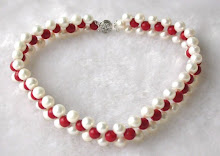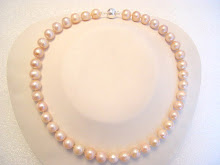Tips
 Hyderabad provides you a real variety when it comes to shapes. You can go in for seed pearls, the half-sphere button pearls, or the tear-drop shaped ones. Special favorites are the tapered "rice" pearls and the tiny "flower" pearls of different sizes. They look great, strung along singly or as a rassi.
Hyderabad provides you a real variety when it comes to shapes. You can go in for seed pearls, the half-sphere button pearls, or the tear-drop shaped ones. Special favorites are the tapered "rice" pearls and the tiny "flower" pearls of different sizes. They look great, strung along singly or as a rassi.When you buy pearls, rub them gently against the teeth. The genuine are sure to have a grainy, rough sensation. And they are certain to look pinkish or yellowish against the sunlight. Moreover, a good pearl should have a tremendous luster, since a pearl, when it is getting made, is born of layers of nacre - and the thicker the layers, the better the sheen. Once you have made this priceless purchase, do not forget to take proper care of them. Pearls are pretty soft. So, they can be scratched with a pin! Therefore, better to wear them in ornaments, which provide them a casing. They are easily damaged by friction. So, restring your pearl necklaces regularly, and don't forget that they should be knotted in between to avoid sliding. Pearls are susceptible to acids, even those in perspiration. So, wipe your pearls clean before you close your jewel box.
And, do not forget the ancillary mother of the pearl industry - the sea shells - which is sure to tempt you with lovely artifacts to decorate your houses







